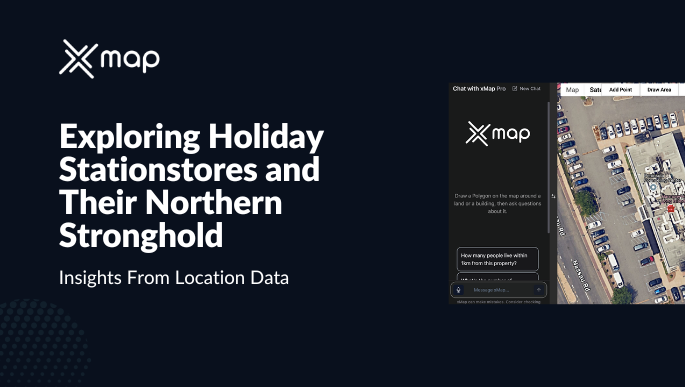Exploring Holiday Stationstores and Their Northern Stronghold (2025)

- Remove the current class from the content27_link item as Webflows native current state will automatically be applied.
- To add interactions which automatically expand and collapse sections in the table of contents, select the content27_h-trigger element, add an element trigger, and select Mouse click (tap).
- For the 1st click, select the custom animation Content 27 table of contents [Expand], and for the 2nd click, select the custom animation Content 27 table of contents [Collapse].
- In the Trigger Settings, deselect all checkboxes other than Desktop and above. This disables the interaction on tablet and below to prevent bugs when scrolling.
Gas stations are more than just pit stops for fuel — they’re community anchors, convenience centers, and increasingly, innovation hubs. One chain that exemplifies this, especially in the Upper Midwest, is Holiday Stationstores. With roots going back to 1928 and a deep connection to northern U.S. culture, Holiday has built a loyal customer base in Minnesota, Wisconsin, Michigan, and beyond.
In 2017, Holiday was acquired by Alimentation Couche-Tard, the Canadian convenience giant behind the Circle K brand. Since then, the chain has gradually been integrated into the global retail ecosystem while still maintaining its unique regional character.
As of 2025, Holiday operates over 500 locations across 10 states, with a stronghold in Minnesota where it is the undisputed leader. This blog explores Holiday’s market footprint, customer experience, growth strategy, and how it is adapting to the changing fuel and retail landscape.
Holiday’s Geographic Footprint
Holiday’s presence is heavily concentrated in the Upper Midwest — regions with cold winters, long drives, and a culture of convenience stores that double as community hubs. Its branding, services, and even product assortment are tailored for these markets.
Here’s a breakdown of Holiday’s store distribution by state in 2025:
Key Insight: Holiday commands nearly one-third of Minnesota’s fueling market, giving it unmatched regional dominance.
Customer Experience: More Than Just Fuel
Holiday has long marketed itself as “convenience with a northern touch.” Unlike purely fuel-focused chains, Holiday has leaned heavily into foodservice, bakery items, and cold-weather essentials.
Key pillars of Holiday’s customer appeal:
- Signature Bakery: Fresh donuts and pastries are a major draw, rivaling larger competitors like Kwik Trip.
- Hot Foods & Coffee: Strong winter coffee programs and hot food offerings help maintain customer loyalty.
- Community Ties: Many Holiday locations sponsor local hockey, community events, and school programs, keeping the brand deeply rooted in local culture.
In 2025 surveys of Midwest consumers, Holiday ranked #3 in customer satisfaction for gas station convenience stores — just behind Kwik Trip and Casey’s.
Fuel Sales & Market Share
While Holiday is primarily recognized for convenience and food offerings, fuel sales remain the backbone of the business.
Here’s a snapshot of Holiday’s estimated 2025 fuel market performance:
Observation: Holiday sells more fuel per store than the regional average, signaling strong traffic flows and brand loyalty.
Food & Convenience Revenue
Like many regional chains, Holiday has realized that high-margin foodservice is key to profitability. While fuel drives traffic, it’s snacks, coffee, and hot meals that boost margins.
This mirrors a larger U.S. industry trend where foodservice can account for 25–30% of convenience store profits.
EV Charging Expansion
The Midwest is not traditionally seen as an EV hotbed, but Holiday is moving quickly to prepare for the shift. Backed by Couche-Tard, Holiday has started rolling out fast chargers at high-traffic stores, often co-locating them with Circle K branding.
By 2027, Holiday aims to have EV chargers at 40% of its stations, positioning itself as a regional leader in alternative fueling.
Holiday vs Competitors
When compared with other Midwest brands, Holiday sits in an interesting position: not as large as Kwik Trip or Casey’s, but far more dominant than independent operators.
Holiday’s average revenue per store is among the strongest in the region, thanks to higher-than-average fuel sales and strong in-store programs.
Growth Strategy
Holiday’s future is tied to integration with Circle K while retaining its distinct brand identity in core markets. Expansion is less about adding hundreds of stores and more about:
- Upgrading existing stores with modern layouts and digital ordering.
- Scaling EV charging infrastructure ahead of regulatory pushes.
- Strengthening foodservice, particularly hot meals and bakery items.
- Leveraging Couche-Tard’s global supply chain for efficiencies.
Conclusion
Holiday Stationstores may not be as nationally recognized as Shell, BP, or 7-Eleven, but in the Upper Midwest it is a powerhouse. With more than 500 stores, deep community ties, and a growing push into EV charging, Holiday is balancing tradition with innovation.
For site selection professionals, Holiday’s footprint tells a story of regional dominance, community loyalty, and forward-looking investment in alternative fueling. For consumers, it remains a familiar and reliable stop on cold mornings and long drives across northern America.
連絡を取る
あなたの目標やプロジェクトの規模が何であれ、私たちはそれを処理します。
100% ご満足いただけるよう努めます。
「私たちは、中東のビジネスニーズに合わせた質の高いデータを提供することに重点を置いています。レストラン、ホテル、ジムのいずれであっても、地理データを使用して業務上の意思決定を強化できます。」





